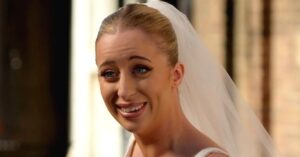
The latest poll conducted by RedBridge Group has confirmed Labor’s continued dominance in the political landscape following the recent election. This poll, which follows an earlier survey by Roy Morgan, shows Labor holding a significant lead with 55.5% on a two-party preferred basis, compared to the Coalition’s 44.5%. The poll surveyed a large sample of 4,036 respondents in late June.
According to the Financial Review, the poll results indicate Labor’s support at 37%, a slight increase from their 34.6% share during the election. Meanwhile, the Coalition’s support remains relatively stable at 31%, closely mirroring their election result of 31.8%. The Greens have seen a minor decrease, polling at 11% compared to their previous 12.2%.
Demographic Insights and Voting Trends
The RedBridge poll provides a detailed breakdown of voting preferences across different demographics. While gender differences appear balanced, age-related trends reveal a stark contrast. The Coalition’s support plummets from 44% among voters aged 65 and over to just 19% among those aged 18 to 34. Conversely, the Greens see their support rise significantly from 2% to 24% in the younger age bracket. Labor’s appeal remains consistent across all age groups.
“Labor’s two-party preferred lead of 55.5% is slightly lower than expected, possibly due to One Nation capturing a larger share of ‘other’ votes,” the report notes.
Potential Legal Challenge in Bradfield
Amidst these polling results, a significant development is unfolding in the electorate of Bradfield. The Sydney Morning Herald reports ongoing discussions within the Liberal Party about whether to legally contest the narrow victory of independent candidate Nicolette Boele, who won by just 26 votes. Local branch presidents are urging the party to fund a legal challenge, although some members warn of potential financial and political risks.
Polling conducted for Climate 200 in mid-June suggests that Boele’s primary vote could increase from 27.0% to 33.2% in the event of a by-election, indicating a strong chance of her retaining the seat. Gisele Kapterian, the Liberal candidate, shows a slight decrease in support, polling at 37.3% compared to 38.0% during the election.
Historical Context and Implications
The current political landscape reflects a broader trend of shifting voter allegiances in Australia. Historically, the Labor Party has seen fluctuating support, often influenced by economic conditions and leadership changes. The Coalition, traditionally strong among older voters, faces challenges in appealing to younger demographics, a trend that could reshape future electoral strategies.
Experts suggest that Labor’s consistent performance across age groups may be attributed to their policies on climate change, healthcare, and education, which resonate with a wide spectrum of voters. Meanwhile, the Greens’ growing popularity among younger voters highlights an increasing demand for progressive policies.
“The Coalition’s declining support among younger voters is a significant concern that requires strategic reevaluation,” political analyst Dr. Emily Chen comments.
Looking Ahead
As the political narrative unfolds, the potential legal battle in Bradfield could serve as a pivotal moment for the Liberal Party. Should they proceed with the challenge, the outcome could influence their standing in future elections. Meanwhile, Labor’s sustained lead in the polls suggests a strong position as they continue to navigate the post-election landscape.
The coming months will likely see intensified efforts from all parties to solidify their bases and address the evolving priorities of the Australian electorate. As political dynamics continue to shift, the focus will remain on how these changes impact both policy and public sentiment.







